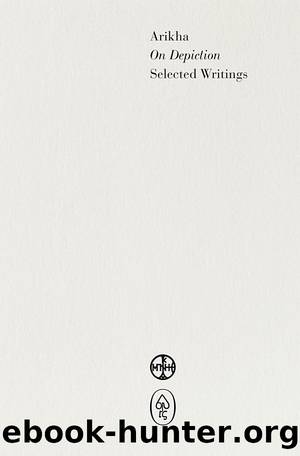On Depiction by Avigdor Arikha

Author:Avigdor Arikha
Language: eng
Format: epub
ISBN: 9781912475476
Publisher: Urtext
Published: 2020-07-30T00:00:00+00:00
Annibale Carracci, The Lute Player, Mascheroni, before 1595
Red chalk drawing accords with humanist ideas, going beyond the old concept of line as outline. It was then a new medium not turned towards antiquity but towards the immediate. It was a medium for drawing from life. It contradicted Cennino Cenniniâs notion that âthe poet . . . is free to compose . . . In the same way the painter is given freedom to compose a figure, standing, seated, half-man, half-horse, as he pleases.â7 It is therefore no longer a question of drawing or painting pebbles in the studio and later enlarging them and calling them a mountain. Now it was the real rock and the real mountain that called. The living subject. The applied metallic line no longer held the attraction from which stemmed Pisanelloâs power. It was a new, spontaneous line which replaced it, doing away with the medieval craftsmanâs mark. This new anti-graphic medium, soft and saturated, gave birth to a new line, to new means of expression. However, the temptation of mixed media like pen-chalk, two-crayons, three-crayons, or red chalk-wash did away with the restrictive purity of the metal line. It was practised by Procaccini, Carlo Cignani, Passari, then by Bloemaert and Jacques Bourguignon. But the technique, mixing red and bistre chalk and wash, practised by Leonardo, Carpaccio, Piero di Cosimo, Fra Bartolomeo and others, was inherent in the means, whence its purity.
Stylistic purity inheres in the singleness of the means, as for example Michelangeloâs red chalk drawing called Studies for the Head of Leda (Florence, Casa Buonarroti) or Dürerâs black chalk portrait of Erasmus (Paris, Musée du Louvre). This purity is a voluntary impoverishment, a restriction to a single means, pursued to its logical end, which then gives all its amplitude.
But the tendency to mix media induced by the praxis of the possibilities red chalk offered, gave way, after the second half of the sixteenth century, to a more-than-drawing, a painting almost. It is with the technique of the three crayons, reaching the pinnacle with Rubens and Watteau, that its autonomy was imposed, as well as its divorce from the simple sketch, but also from stylistic purity.
Download
This site does not store any files on its server. We only index and link to content provided by other sites. Please contact the content providers to delete copyright contents if any and email us, we'll remove relevant links or contents immediately.
The Art of Boudoir Photography: How to Create Stunning Photographs of Women by Christa Meola(18545)
Red Sparrow by Jason Matthews(5392)
Harry Potter 02 & The Chamber Of Secrets (Illustrated) by J.K. Rowling(3627)
In a Sunburned Country by Bill Bryson(3486)
Drawing Cutting Edge Anatomy by Christopher Hart(3454)
Figure Drawing for Artists by Steve Huston(3384)
Harry Potter and the Prisoner of Azkaban (Book 3) by J. K. Rowling(3304)
The Daily Stoic by Holiday Ryan & Hanselman Stephen(3238)
Japanese Design by Patricia J. Graham(3112)
The Roots of Romanticism (Second Edition) by Berlin Isaiah Hardy Henry Gray John(2878)
Make Comics Like the Pros by Greg Pak(2856)
Stacked Decks by The Rotenberg Collection(2812)
Draw-A-Saurus by James Silvani(2658)
Harry Potter and the Deathly Hallows (7) by J.K. Rowling(2648)
Tattoo Art by Doralba Picerno(2600)
On Photography by Susan Sontag(2578)
Churchill by Paul Johnson(2511)
The Daily Stoic by Ryan Holiday & Stephen Hanselman(2466)
Drawing and Painting Birds by Tim Wootton(2439)
